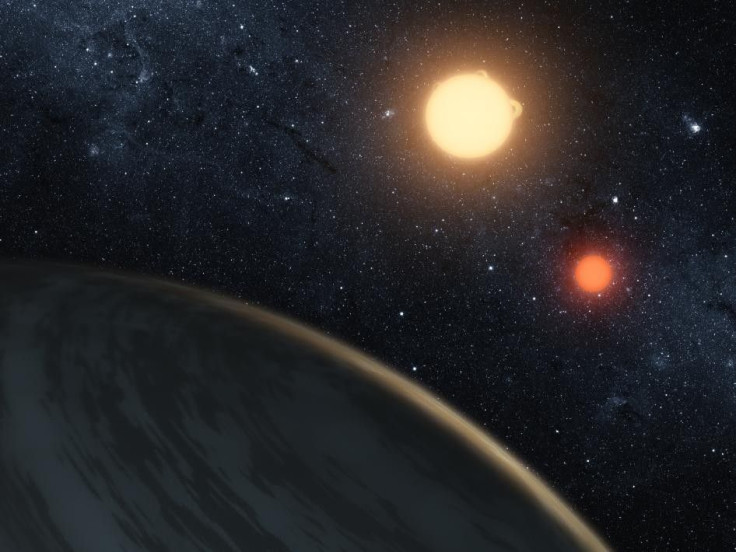Planet With Double Sunset: Two Stars it Orbits Eclipse Each Other (Photos & Video)

It has been one star and multiple planets so far, but here comes a new discovery by NASA, which claims the existence of a planet, located some 200 light years away from Earth orbiting two stars.
According to NASA, thanks to its Kepler mission, the 30-year-old Star Wars fantasy is now a fact. Although previous researches did hint at the existence of planets orbiting two stars, also called circumbinary planets, there was no clear confirmation until the latest discovery by the Kepler space telescope.
Dubbed Kepler-16b, the new planet differs from Star Wars' Tatooine in some respects. Unlike the planet in the film, Kepler-16b is cold, gaseous and not thought to harbor life. However, the new discovery demonstrates the diversity of planets that our galaxy possesses, NASA said.
Laurance Doyle of the SETI Institute in Mountain View led a research team that used data provided by the Kepler telescope, which looks for Earth-size planets in or near the habitable zone, the region in a planetary system where liquid water can exist on the surface.
According to scientists, the two stars that the planet orbits eclipse each other from our vantage point on Earth. A primary eclipse takes place when the smaller star partially blocks the larger one. Similarly, the secondary eclipse occurs when the larger star blocks its smaller counterpart.
Scientists detected the planet while observing the dipped brightness of the system even when the stars were not eclipsing one another. Thus, scientists got the hint that there must be a third body in the system.
Scientists noticed that the additional dimming in brightness reappeared at irregular intervals of time, which indicated that each time the planet passed, both the stars were in different positions in their orbit. This was the activity that showed the planet was orbiting not just one, but both the stars, in a wide circumbinary orbit.
The two stars which Kepler-16b orbits are said to be smaller and cooler than our sun. The stars are 20 and 69 percent as massive as the sun, said researchers in their report published online in the Sept. 16 issue of journal Science.
Kepler-16b, which orbits its suns in 229 days, is comparable to Saturn in mass and size, scientists said.
Watch the video:
© Copyright IBTimes 2024. All rights reserved.






















